Tuesday August 26, 2014
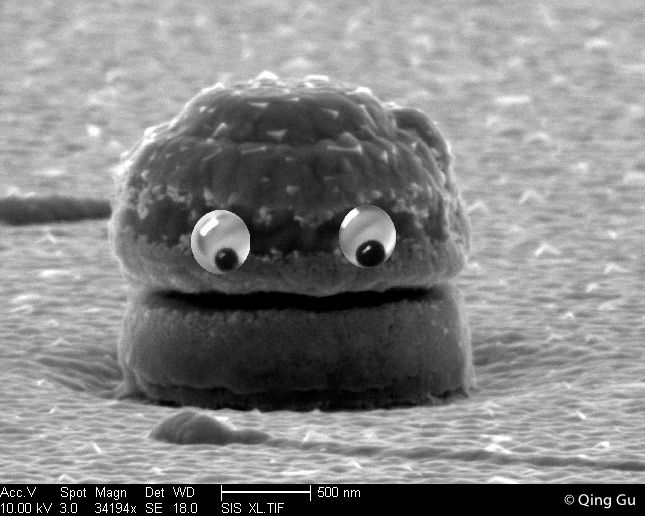
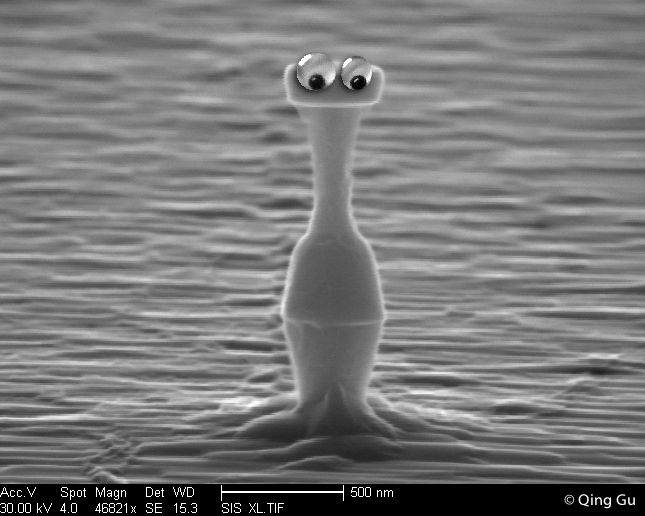
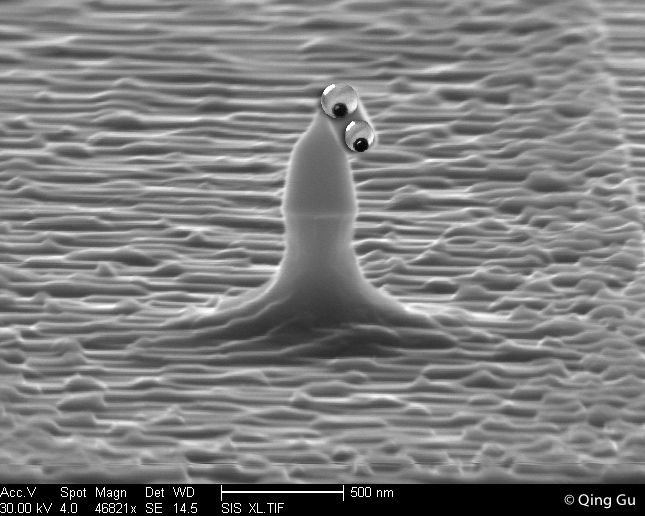
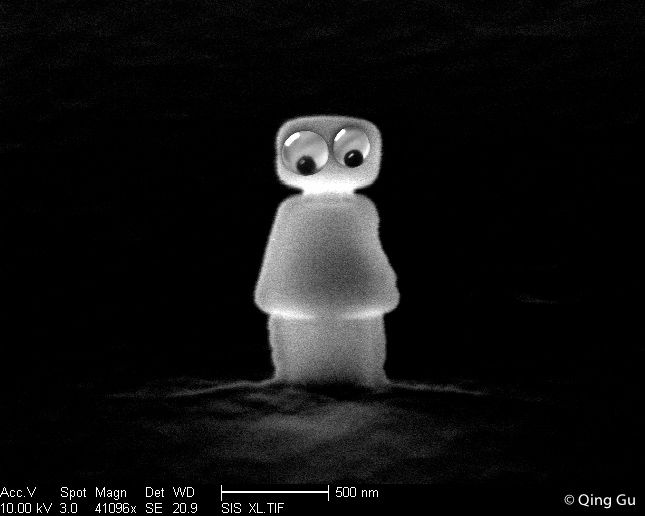
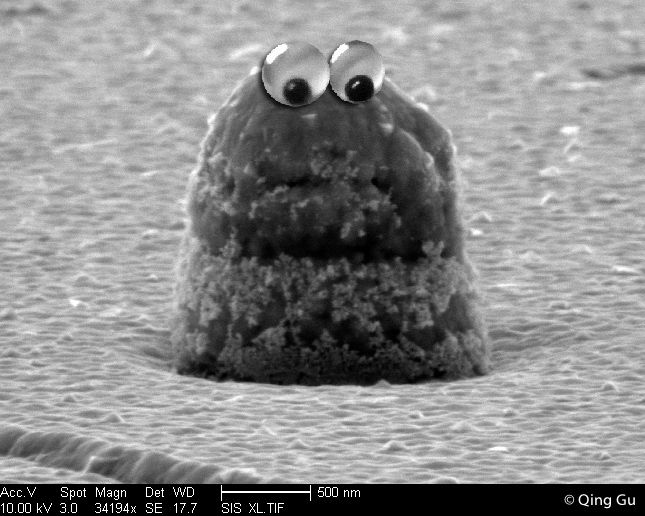
Nanolasers with googly eyes! Because grad students.
These are microscopic lasers, shown in various stages of completion. The innermost layer, looking like a slim grey column, is the semiconductor core, which actually does the light-amplifying. Next comes a layer of glass that coats the entire laser (the white puffy-looking laser), keeping the semiconductor isolated from the outermost layer, which is a thick coat of lumpy silver. The really gnarly muppet-looking ones are the finished product. These nanolasers are far too small to see with the naked eye, or even with a microscope - they’re about 1 micron in diameter, or about 1/100th the width of a single human hair.
Why build lasers this small? One day, computers may use lasers like these to speed up communication between different processing cores, or even between different parts of the same computer chip. Lasers this small are densely packable, and the metal coating helps avoid interference between the lasers. For the curious, here’s all the gory technical detail: http://photonicssociety.org/newsletters/oct13/RH_Nanoscale.html
Lasers fabricated and imaged by Dr. Qing Gu at UC San Diego. Googly eyes added by Janelle Shane, with apologies to Dr. Qing Gu.


